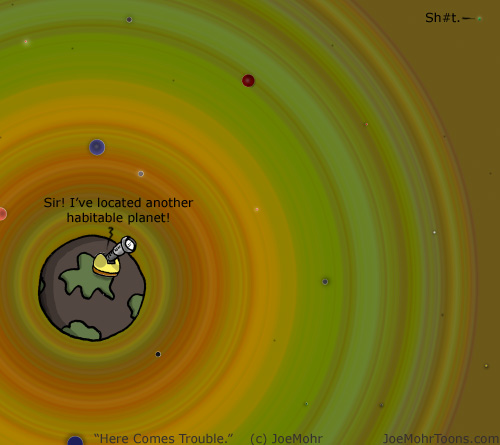Drones are no longer known as mere weapons of war. At least, that’s how Google, Facebook, and other online giants like Amazon appear to be thinking. Google has just acquired Titan Aerospace, a promising solar-powered drone maker, as part of its plans to globalize wireless internet.
Titan’s website provides news that the company is working the Solara 50 and 60 nonstop “atmospheric satellites,” unmanned ultralight solar jets designed to fly nonstop (well over 250 million miles, or 400M km), for at least 5 years at a time. Wing-mounted solar panels and onboard battery storage for night flying propel the low-wind tropopause vehicles. They fly up to 65,000 feet. Size-wise, the jets are big as Boeings, with 165-foot wingspans. The small (20-employee) company based in New Mexico has pinpointed initial commercial operations for 2015.
Ian Clover of PV Magazine details the collaboration: “Google’s technical experts will work with Titan Aerospace to advance the material design for the drones’ wings, while also developing advanced algorithms to help the aircraft better traverse wind patterns and flight routes.”
Google bought Titan for an undisclosed sum, reportedly at least three times what Facebook paid for British drone-maker Ascenta last month. Clay Dillow of CNN Money characterizes firms like Titan and Ascenta as “small, privately held companies sitting on various competing technologies that are waiting to see how customers—or perhaps future corporate overlords—will put them to work.”
Facebook was also in talks with Titan before making public its own recent decision to buy Ascenta and extend Internet access via solar-powered vehicles. A source close to Facebook told Clover that the idea had been floating around for at least six months.
Some analysts view the development as a natural outgrowth of Google X work on a high-altitude network of sophisticated balloons carrying radio transmitters (Project Loon) to extend internet service over the southern hemisphere. Solar-powered drones offer advantage over balloons because they can handle adverse weather conditions better. Both are cheaper and have greater range than drones or satellites powered by fossil fuels or batteries.
Google confirmed its Titan buy with this remark:
“It is still early days, but atmospheric satellites could help bring internet access to millions of people [in less developed countries], and help solve other problems, including disaster relief and environmental damage like deforestation.”
Facebook has made similar statements.
Noteworthy humanitarian goals, but what are the tech giants really going for? The drones could collect real-time geospatial data and aerial imagery to be used in online maps and services. They could be used in disaster recovery and for oceanographic and geologic research. They could also monitor weather and traffic data from a long way up. Presumably, the technology bundles developed could improve functioning of other robotic devices like self-driven cars and high-altitude wind turbines.
The drone networks also have to potential to displace current mobile carriers. Many of the military uses are obvious. And naturally, the companies will be able to sell more digital advertising if more people are able to go online.


